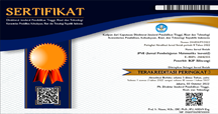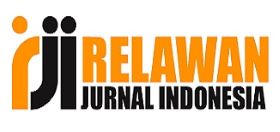ANALISIS KEMAMPUAN PENALARAN MATEMATIS SISWA SMA PADA MATERI LIMIT FUNGSI
DOI:
https://doi.org/10.22460/jpmi.v1i3.p409-414Keywords:
mathematical reasoning, function limitAbstract
References
Ario, M. (2016). Analisis Kemampuan Penalaran Matematis Siswa SMK Setelah Mengikuti Pembelajaran Berbasis Masalah. Jurnal Ilmiah Edu Research, 5(2), 125–134.
Basir, M. A. (2015). Masalah Matematis Ditinjau Dari Gaya Kognitif, 3, 106–114.
Darhim. (1979). PENGARUH PEMBELAJARAN MATEMATIKA KONTEKSTUAL TERHADAP SIKAP SISWA SEKOLAH DASAR. FPMIPA Universitas Pendidikan Indonesia, 1–13.
Hermawan, A. S., & Hidayat, W. (2018). Meningkatkan Kemampuan Penalaran Matematik Siswa SMP Melalui Pendekatan Penemuan Terbimbing. JPMI (Jurnal Pembelajaran Matematika Inovatif), 1(1), 7-20.
Hidayat, W. (2017). Adversity Quotient dan Penalaran Kreatif Matematis Siswa SMA dalam Pembelajaran Argument Driven Inquiry pada Materi Turunan Fungsi. KALAMATIKA Jurnal Pendidikan Matematika, 2(1), 15-28.
Hidayat, W., & Prabawanto, S. (2018, January). Improving students’ creative mathematical reasoning ability students through adversity quotient and argument driven inquiry learning. In Journal of Physics: Conference Series (Vol. 948, No. 1, p. 012005). IOP Publishing.
Isnaeni, S., Fajriyah, L., Risky, E. S., Purwasih, R., & Hidayat, W. (2018). Analisis Kemampuan Penalaran Matematis dan Kemandirian Belajar Siswa SMP pada Materi Persamaan Garis Lurus. Journal of Medives, 2(1), 107-116.
Ramdani, Y. (2012). Pengembangan Instrumen dan Bahan Ajar untuk Meningkatkan Kemampuan Komunikasi, Penalaran, dan Koneksi Matematis dalam Konsep Integral. Jurnal Penelitian Pendidikan, 13(1), 44–52. Retrieved from http://jurnal.upi.edu/file/6-yani_ramdhana-edi.pdf
Sholihat, N. A. N., Hidayat, W., & Rohaeti, E. E. (2018). Faktor Kemampuan Penalaran Matematis dan Penghargaan Diri Siswa SMP. JPMI (Jurnal Pembelajaran Matematika Inovatif), 1(1), 1-6.
Sulistiawati, S., Suryadi, D., & Fatimah, S. (2015). Desain Didaktis Penalaran Matematis untuk Mengatasi Kesulitan Belajar Siswa SMP pada Luas dan Volume Limas. Kreano, Jurnal Matematika Kreatif-Inovatif, 6(2), 135. https://doi.org/10.15294/kreano.v6i2.4833
Sumarmo, U. (2012). Pendidikan karakter serta pengembangan berfikir dan disposisi matematik dalam pembelajaran matematika. Seminar Pendidikan Matematika, 1–26.

















